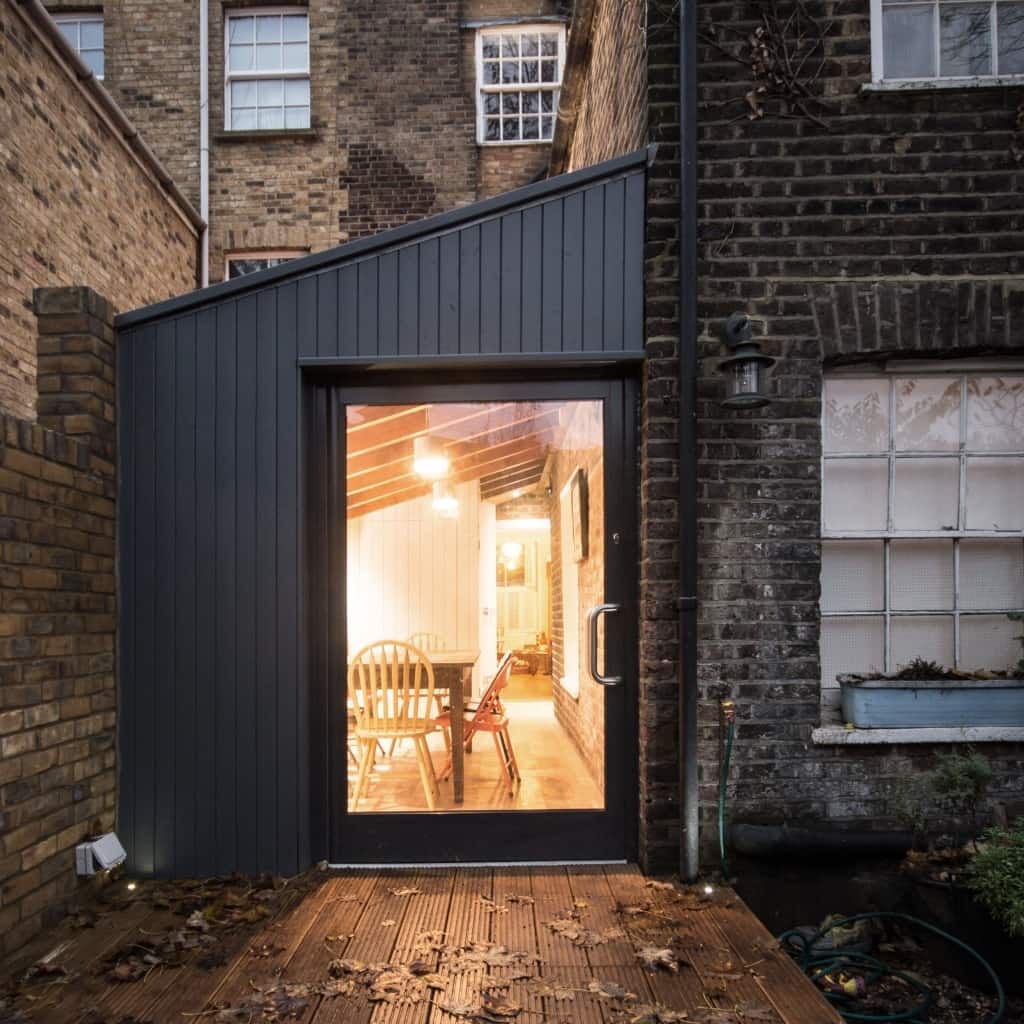How big can I build an extension without planning permission (permitted development)?
The permitted development (PD) rules allow many homeowners to build a rear extension without full planning permission — up to six metres from the original rear wall of most houses, or eight metres if your house is detached (subject to the detailed PD limits below and any local restrictions).
Above: Extensions by architects on Design for Me. Click an image to view profiles and shortlist for your project.
The “larger home extension scheme” was originally temporary, but since 2020, has been made permanent.
2. Is your property a house?
Flats, maisonettes and non-dwelling buildings do not have PD rights, so you’ll need full planning permission. If the property was converted to a house or changed use in the past, it may not benefit from PD either.
3. Have you (or previous owners) extended since 1948?
Existing extensions and outbuildings can eat into your PD allowance. PD limits apply to the “original house” (as first built or as it stood on 1 July 1948).
4. Is your property listed or on ‘designated land’?
In Conservation Areas, National Parks, AONBs, the Broads and World Heritage Sites, or where an Article 4 Direction applies, PD may be restricted or removed. Listed buildings do not benefit from PD in the usual way.
If restricted, you typically cannot:
- build more than one storey under PD,
- build a side extension under PD,
- or clad the exterior under PD.
Permitted Development rules: the quick checklist
The notes below are a summary. Always check the official guidance and local policies before proceeding (read the guidance).
Rules applicable to all PD extensions
- Materials must be similar in appearance to the existing house.
- No verandas, balconies or raised platforms.
- Must not be taller than the existing house.
- The total of extensions/outbuildings must not cover more than 50% of the curtilage (garden/plot area excluding the original house).
- Single-storey PD extensions: max 4m overall height (or 3m if within 2m of a boundary).
Front extensions
Not allowed under PD. You can still apply for planning permission.
Side extensions
- Must not front a highway.
- Single storey only.
- Max 3m projection from the original side wall.
- Width no more than half the width of the original house.
Single-storey rear extensions
Detached houses: up to 8m deep under the permanent “larger home extension” rules.
Semi-detached/terraced: up to 6m deep.
For extensions beyond 4m (detached) or 3m (others) you must follow the Neighbour Consultation Scheme (“prior approval”). If objections are received and impacts are deemed unacceptable, the larger extension may be refused.
Two-storey rear extensions
- Height: eaves and ridge no higher than the existing house. If within 2m of a boundary, eaves max 3m. Roof pitch should match existing where practicable.
- Depth: up to 3m from the original rear wall; must be at least 7m from the rear boundary opposite the rear wall.
- Materials: similar appearance to existing.
- Location: two-storey side/front extensions are not PD.
- Windows: any upper-floor side windows must be obscure-glazed and non-opening (unless the opening parts are 1.7m above finished floor level).
Not sure if your idea qualifies under PD?
Before you buy or build, get independent clarity on feasibility, planning risk and value with a pre-purchase appraisal from The Potential House (impartial, architect-led, no follow-on design).
Ready to progress design and permissions? Find and compare architects on Design for Me — it’s free to post and see who’s interested.
Permitted Development extension – FAQs
Do I need Building Regulations approval even if my extension is PD?
Yes. PD only relates to planning. You must still comply with Building Regulations (structure, fire safety, insulation, drainage, etc.).
What’s the difference between 6m/8m PD and the “Neighbour Consultation Scheme”?
Depths up to 3m (non-detached) or 4m (detached) are standard PD. Beyond that, up to 6m/8m, you need a prior approval process where neighbours are notified and the council can refuse on amenity grounds.
Should I apply for a Certificate of Lawful Development?
It’s optional but recommended. It confirms your extension is lawful under PD — helpful for peace of mind, future sale and mortgage queries.
How do previous extensions affect my PD rights?
PD limits apply to the “original house”. Previous extensions/outbuildings since 1948 count toward the 50% garden coverage limit and can reduce what’s left for you to build under PD.
Do Conservation Areas or Article 4 Directions remove PD?
They can restrict or remove PD rights. Always check with your local planning authority and review any Article 4 covering your address.
Can I rely on PD before I’ve bought the house?
You can’t “apply” for PD, but you can seek a Certificate of Lawful Development after purchase. If you’re still viewing, get an impartial pre-purchase appraisal to understand what’s likely to be acceptable under PD or planning.




